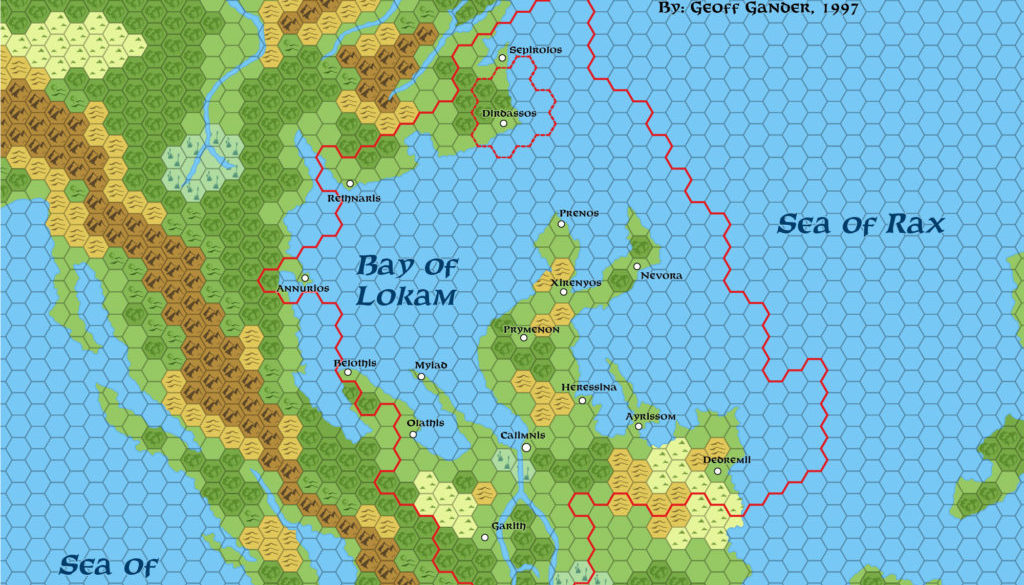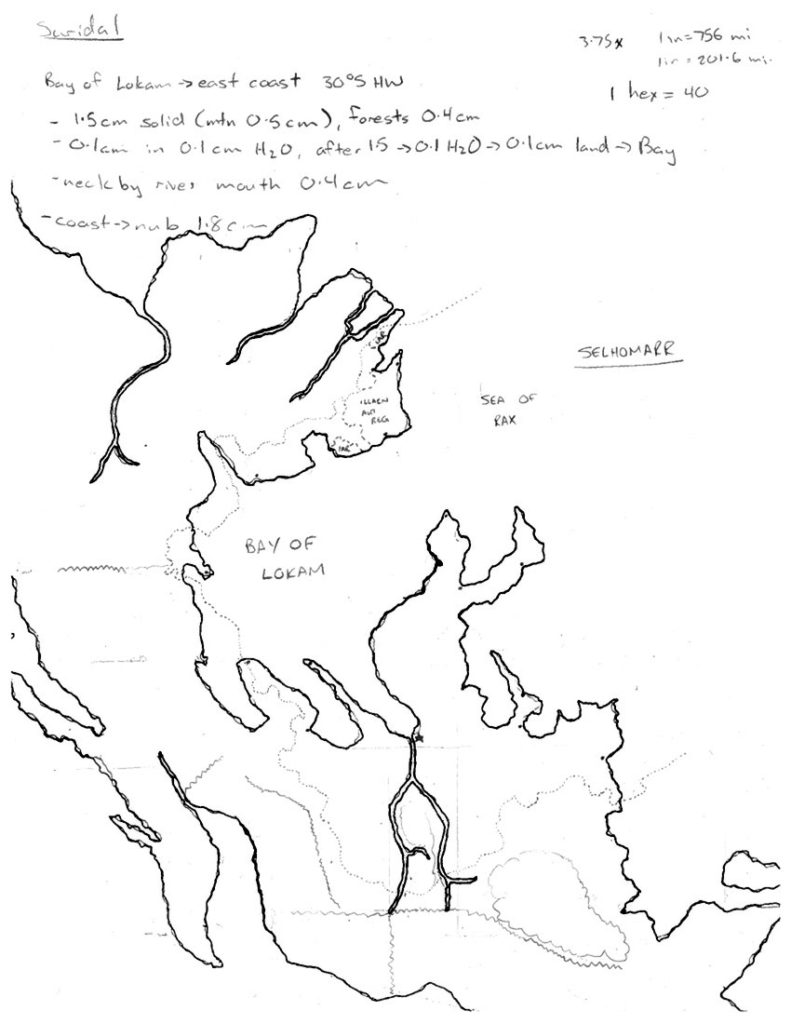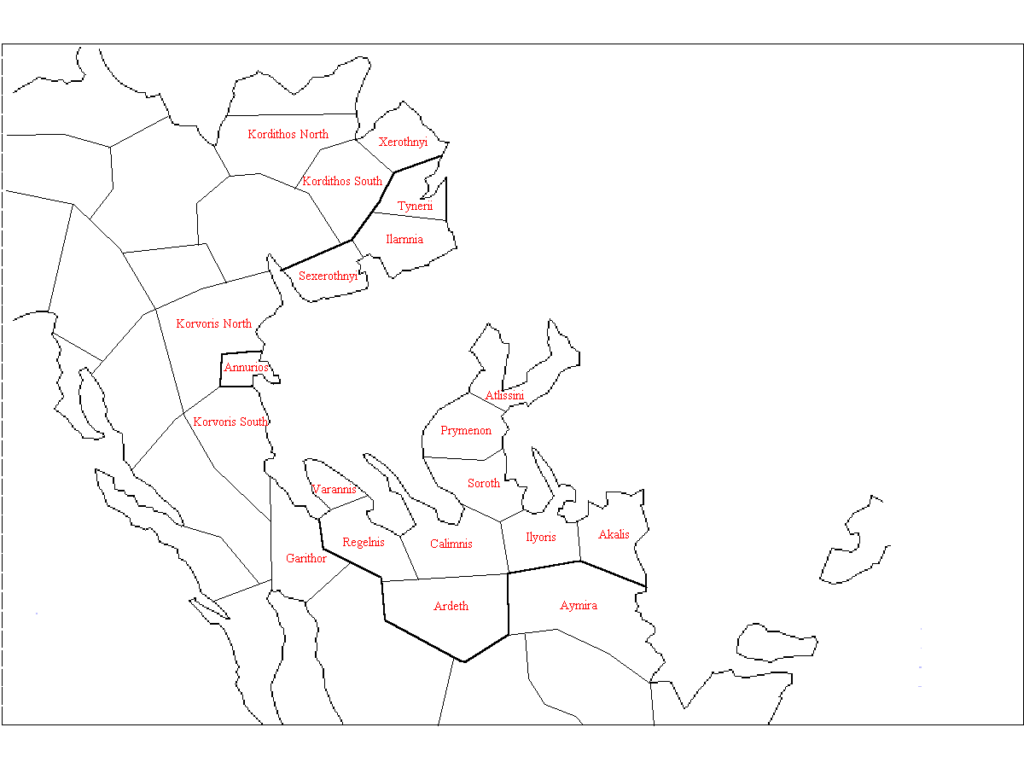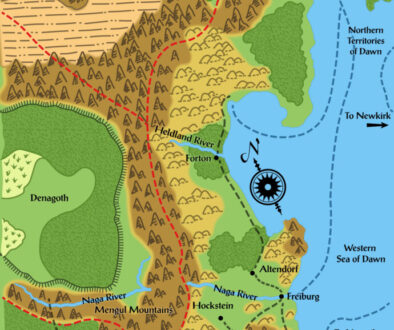Geoff’s Selhomarr, 40 miles per hex
Late in 1997, Geoff debuted a nation of his own creation: the Empire of Selhomarr. He situated this ancient nation in the Hollow World, on the otherwise undeveloped eastern continent of Suridal — and he drew a map to go along with his text.
In 2009, I chose this map to be my first replica of a fan-made map, and created two different versions, then worked together with Geoff to make an updated version. This in turn led to the development of an 8 mile per hex map of the area.
Wouldn’t it be wonderful to see a full-fledged Gazetteer of the area someday?
Fan-made Map by Geoff Gander (November 1997)

This is an original map created by one of Mystara’s excellent fan cartographers. For more information on the cartographer, including a gallery of all their maps, see also Appendix M: Mappers of Mystara.
Standardised Replica Fan-made Map (February 2021)

Replica Fan-made Map with Original Palette (February 2021)
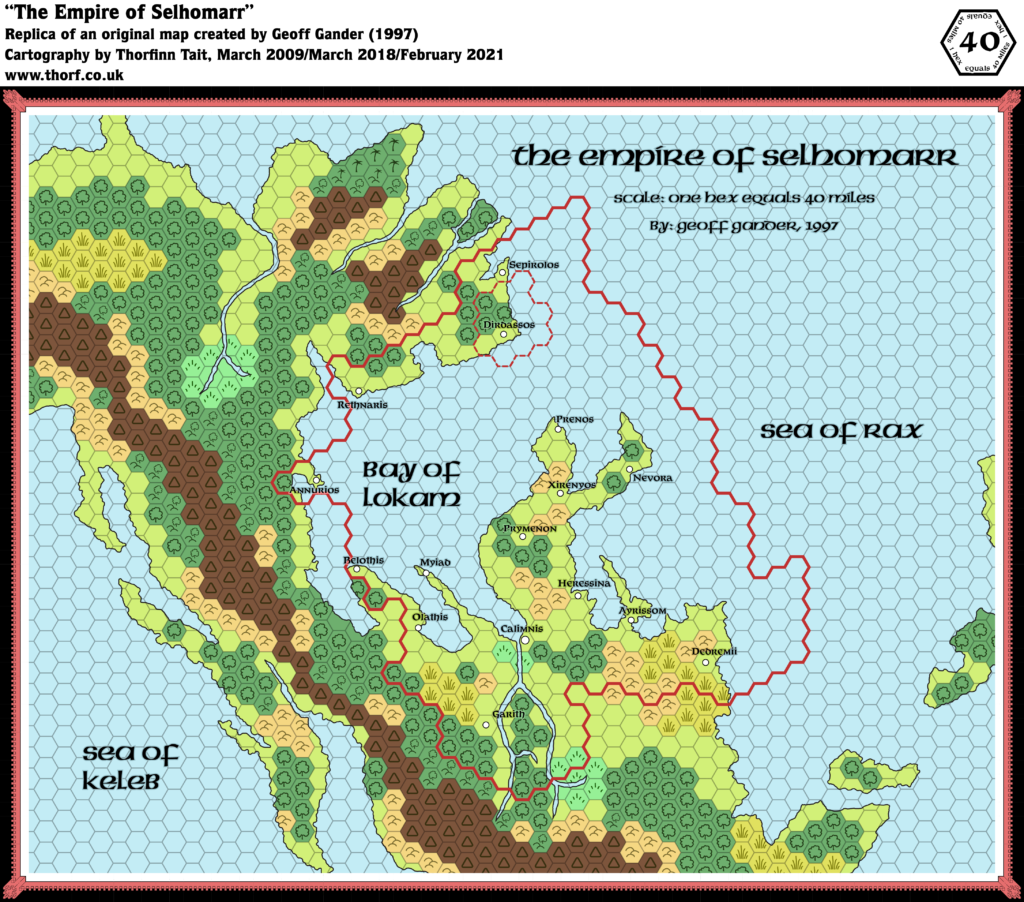
Sources
- Hollow World Campaign Set (1990) (PDF at DriveThruRPG)
- Hollow World Planetary Map
Secondary Sources
- The Empire of Selhomarr: a Gazetteer from 5 November 1997 to 23 August 1999 (Vaults of Pandius)
- The Empire of Selhomarr: Player’s Guide current as of 6 May 1998 (Vaults of Pandius)
References
- All of Geoff’s maps at the Atlas of Mystara
- Geoff’s entry in Appendix M: Mappers of Mystara
- Geoff’s author page at the Vaults of Pandius
- Selhomarr, 40 miles per hex discussion thread at The Piazza
Chronological Analysis
This is a fan-made map. It was published in November 1997. The updated Atlas version of this map is not yet available. See also Appendix C for annual chronological snapshots of the area. For the full context of this map in Mystara’s publication history, see the upcoming Let’s Map Mystara 1997. (Please note that it may be some time before the project reaches this point.)
The following lists are from the Let’s Map Mystara project. Additions are new features, introduced in this map. Revisions are changes to previously-introduced features. Hex Art & Fonts track design elements. Finally, Textual Additions are potential features found in the related text. In most cases, the Atlas adopts these textual additions into updated and chronological maps.
Coming Soon
Under Construction! Please check back again soon for updates.
Additions
Revisions
Hex Art & Fonts
- Hex Art — Hand-drawn symbols with pencil colouring.
- Fonts — American Uncial D, hand-written numbers.


